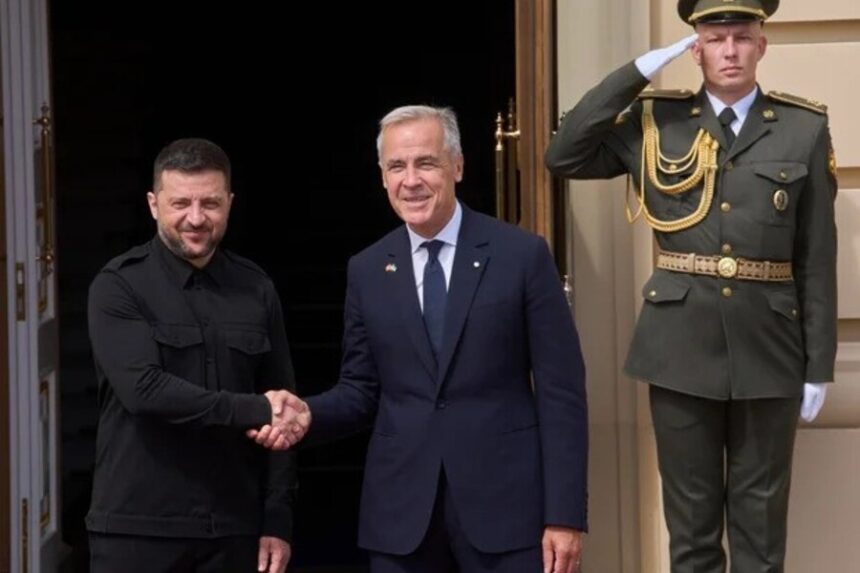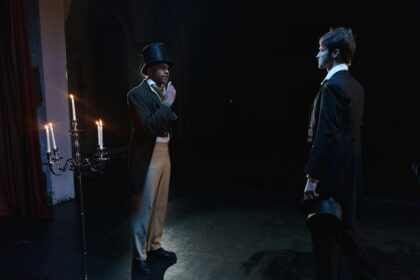Ukraine celebrated the 34th anniversary of its independence on Sunday with defiant speeches, fresh pledges of Western military support, and a flurry of claims and counterclaims over drone attacks and battlefield gains. The day also brought a striking note from Washington: U.S. Vice President JD Vance said he believes Russia has shown “significant concessions” in exploratory talks, even as Moscow insisted a summit between Presidents Volodymyr Zelenskyy and Vladimir Putin is nowhere near.
- Cross-border strikes and nuclear safety concerns
- Washington: “Significant concessions” claimed, but no leaders’ summit planned
- Independence Day in Kyiv: resolve and recognition
- Allies step up military support
- Front lines and prisoner exchange
- Why it matters
- What readers need to know (user-intent Q&A)
- The bottom line
Cross-border strikes and nuclear safety concerns
Russian authorities accused Ukraine of launching overnight drone attacks that ignited a fire at a nuclear facility in the Kursk region. The plant’s press service said the blaze—linked to a transformer—was put out quickly, caused no injuries, and did not affect radiation levels. The U.N. nuclear watchdog acknowledged media reports of a transformer fire “due to military activity” but said it had no independent confirmation; Director-General Rafael Mariano Grossi reiterated that every nuclear facility “must be protected at all times.” Ukraine did not immediately comment.
Separately, officials reported a fire at the Ust-Luga port area in Russia’s Leningrad region after debris from downed drones fell near a major fuel export terminal. Russia’s Defense Ministry said its air defenses intercepted 95 Ukrainian drones overnight.
Ukraine, for its part, said Russia sent 72 drones and decoys, plus a cruise missile, into Ukrainian territory during the same period; the Ukrainian Air Force reported 48 drones were shot down or jammed. None of these figures could be independently verified.
Washington: “Significant concessions” claimed, but no leaders’ summit planned
In an interview aired Sunday on NBC’s Meet the Press, Vice President JD Vance said Moscow had shown “significant concessions to President Trump for the first time in three and a half years of this conflict,” adding that Russia had been “flexible on some of their core demands.” He described the U.S. effort as an attempt to “negotiate as much as we can with both the Russians and the Ukrainians to find a middle ground to stop the killing,” while cautioning that the war would already be over if a full agreement existed.
Appearing on the same program, Russian Foreign Minister Sergey Lavrov said no meeting between Zelenskyy and Putin is planned. “Putin is ready to meet with Zelenskyy when the agenda is ready for a summit, and this agenda is not ready at all,” Lavrov said.
The remarks followed a White House meeting last week hosted by President Trump with Zelenskyy and European leaders—a gathering Zelenskyy praised as demonstrating “genuine unity.”
Independence Day in Kyiv: resolve and recognition
In a video address from Kyiv’s Independence Square, Zelenskyy vowed to build a Ukraine strong enough to “live in security and peace,” calling again for a “just peace.” Referencing concerns that Ukraine could be sidelined by great-power talks—including a U.S.–Russia summit in Alaska earlier in August—he insisted the country’s future remains “up to us alone” and that “the world respects Ukraine…as an equal.”
U.S. special envoy Keith Kellogg attended the celebrations; Zelenskyy awarded him the Order of Merit, First Class.
Allies step up military support
Canada’s Prime Minister Mark Carney arrived in Kyiv and, alongside Zelenskyy, announced a CA$2 billion (about US$1.44 billion) package of new military assistance aimed at equipping Ukraine’s army with urgently needed weapons. Zelenskyy said he and Carney are also considering the presence of Canadian forces on the ground in Ukraine as part of a reassurance effort.
Norway pledged roughly 7 billion kroner (about US$695 million) for air defense, saying it would co-fund two Patriot systems with Germany, including missiles; Oslo will also help procure air-defense radar.
From Rome, Pope Leo XIV used his Sunday address to pray for peace in Ukraine and sent a telegram to Zelenskyy imploring that “the clamor of arms may fall silent and give way to dialogue.”
Front lines and prisoner exchange
On the battlefield, Russia said its forces seized two villages in the Donetsk region on Saturday, while Ukraine’s military intelligence said Kyiv’s forces retook Novomykhailivka, also in Donetsk. The claims could not be independently verified and illustrate the grinding, localized nature of recent fighting.
Separately, Russia’s Defense Ministry announced a prisoner exchange that returned 146 Russian servicemen from Ukraine in exchange for 146 Ukrainian servicemen; Moscow said eight civilians from Russia’s Kursk region who were captured during a Ukrainian incursion in August 2024 were also freed. Zelenskyy confirmed Ukrainians were coming home—including troops, National Guard members, border guards, and civilians—and said most had been in captivity since 2022, without specifying totals.
Why it matters
- Signals of a diplomatic opening: Vance’s claim of “significant concessions” suggests exploratory movement after years of stalemate. But Lavrov’s insistence that there is no summit agenda underscores the gulf that remains.
- Escalation risks beyond the front line: Strikes tied to a nuclear facility and a major fuel port highlight how the war’s reach complicates energy security and nuclear safety, even when immediate radiation risks are reported as normal.
- Air defense remains decisive: Canada’s and Norway’s packages—Patriots, missiles, and radar—speak to Ukraine’s urgent need to counter drones and missiles and protect critical infrastructure and cities.
- War of attrition endures: Competing claims over village control and continuing POW exchanges point to a long fight where marginal territorial shifts and manpower remain central.
What readers need to know (user-intent Q&A)
Did Russia and Ukraine agree to meet at the leader level?
No. Moscow says no summit is planned; it argues an agenda isn’t ready.
Did the strike cause a nuclear emergency in Kursk?
Plant officials reported a transformer fire that was extinguished, no injuries, and normal radiation levels. The IAEA has not independently confirmed details and reiterates that nuclear sites must be protected.
What new aid did Ukraine secure?
Canada: CA$2 billion for weapons and equipment; a possible Canadian presence in Ukraine is under consideration.
Norway (with Germany): Funding for two Patriot systems (with missiles) and air-defense radar, part of a broader ~US$695 million package.
Are there signs that the war’s intensity is changing?
Both sides reported large overnight drone operations. Ukraine says it downed or jammed 48 incoming drones; Russia says it intercepted 95. Claims are typical of the current high-tempo aerial campaign.
Any progress on humanitarian issues?
A POW exchange returned 146 soldiers to each side, plus eight civilians to Russia. Zelenskyy said many Ukrainians freed had been held since 2022.
The bottom line
Ukraine’s Independence Day mixed symbolic resolve with pragmatic urgency: keep the air defenses coming, press for a “just peace,” and test whether a glimmer of diplomatic flexibility can be turned into real negotiations. For now, with no leaders’ summit on the calendar and drone warfare intensifying, the conflict remains a war of attrition—one increasingly shaped by air defense capacity, energy and nuclear safety risks, and the political will of Kyiv, Moscow, and their backers.




